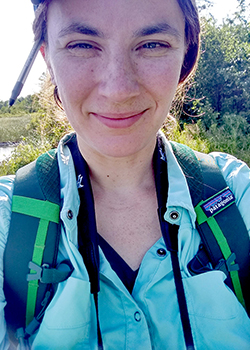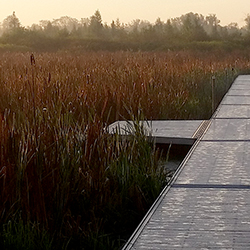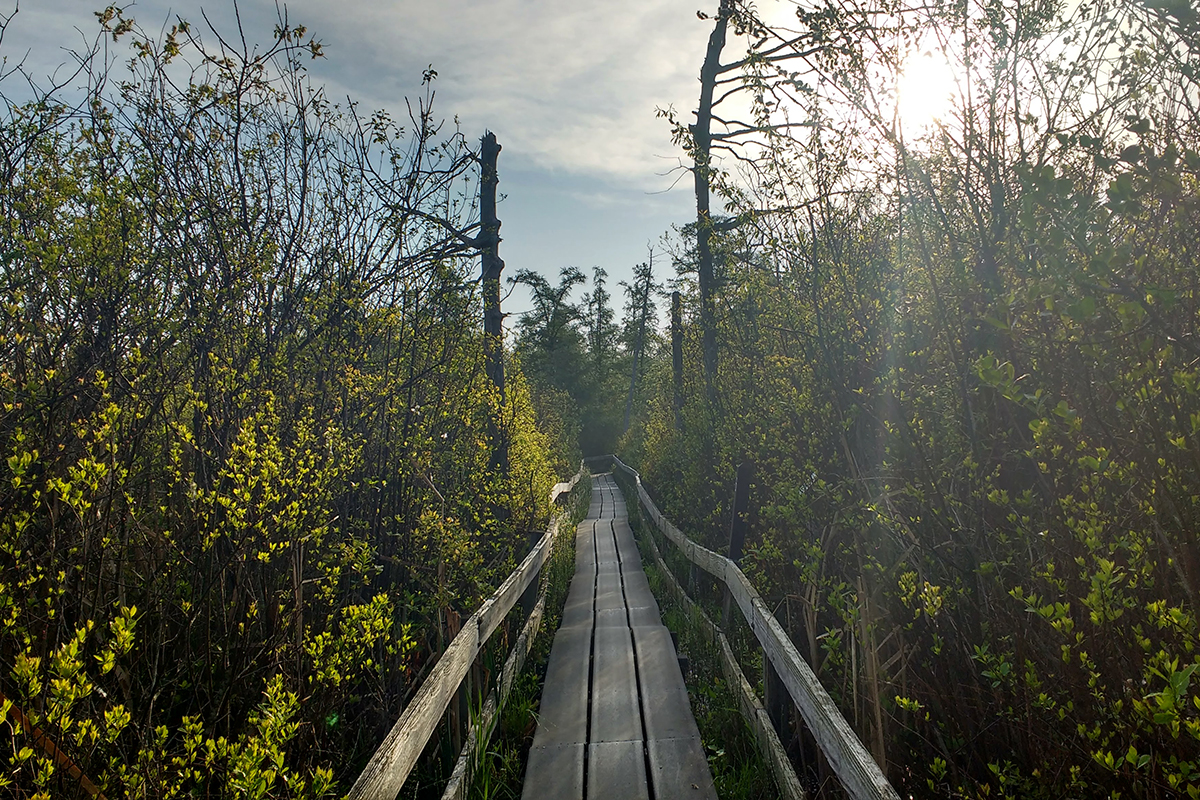
Illinois Natural History Survey assistant ornithologist Anastasia Rahlin conducted field surveys in Volo Bog State Natural Area, Illinois' only open-water quaking bog. Her efforts paid off this summer with the discovery of a king rail, a state-endangered water bird that blends in well with its surroundings.
Photo by Anastasia Rahlin
VOLO BOG, Ill. – It's hot and my shirt is sticking to my back. I part scrubby marsh vegetation with one hand and shield my face with the other. Hiking along the margins of Illinois' only open-water quaking bog, I'm carrying five liters of swamp water in bottles in my backpack, my samples sloshing with each step.
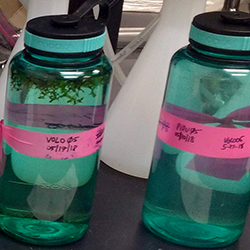
By collecting and analyzing the DNA in water samples from various sites in the bog, researchers can determine which species are active there.
Photo by Anastasia Rahlin
Collecting wetland water samples is far from glamorous. My feet are wet, my legs caked in mud, and I frequently swat at hordes of mosquitoes as I hike, sometimes with as much as 10 liters of water in my pack. I'm not interested in the water; rather, if all goes well, I will find my samples contain the DNA of mysterious marsh birds, called rails, that breed and migrate through Illinois wetlands.
By squeezing my water samples through a fine filter, then extracting and amplifying the DNA that sticks to the filter, I can potentially amplify the bird DNA in each sample and understand which marshes harbor which species of breeding rails.
I'm interested in rails specifically because they're so difficult to find. While we know the migratory patterns of most bird species that stop over or breed in the U.S., we know very little about when and where rails migrate. Big question marks mar the range maps in Birds of the World, an online tool developed by Cornell University and the bible of life history information for our feathered brethren.

The largest of American rails, the king rail prefers to forage at the edge of open water in brackish and freshwater marshes.
Photo by Jim Rathert/USFWS
With my environmental DNA samples, I can start to fill in the gaps of our knowledge of rail distribution. I want to develop models of where rails occur, and I hope to better understand the timing of their migrations. This information will help land managers protect wetlands and better time their wetland mitigation measures.
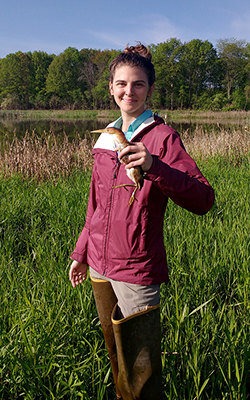
Field technician Alison Világ holds a least bittern discovered in the team's wetland surveys.
Photo by Anastasia Rahlin
Here in the bog, I reach my final survey point and collect my last water sample. I take a breath, and then hear an angry "CLACK! CLACK! CLACK!" I freeze. Could this be a king rail – an endangered species in Illinois? This is a lifer bird for me. Despite searching for them for months in Illinois wetlands, I have never heard or seen one.
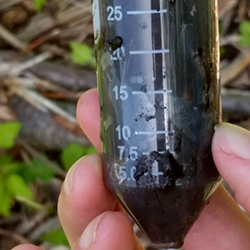
The researchers collected a fecal sample that will allow them to verify that their environmental DNA samples accurately reflect the presence of this bird.
Photo by Anastasia Rahlin
I scour the reeds ahead and notice a shadow bobbing rapidly toward me. The king rail emerges from the reeds, striding with purpose and very angry that I have trespassed on its territory. It is much larger and taller than I expected, approximately knee-high. I hold my breath as I take a video on my phone and stay until the rail disappears again into the marsh, clacking away.
When I get back to the field truck, I tell field technician Alison Világ that I saw a king rail at our last survey location. She promptly goes to investigate.
A few minutes later, I get the best news of the day. Alison sends a text with only two words: "It pooped!" This is excellent news: A fecal sample from a rail will help us validate our eDNA detection methods.

